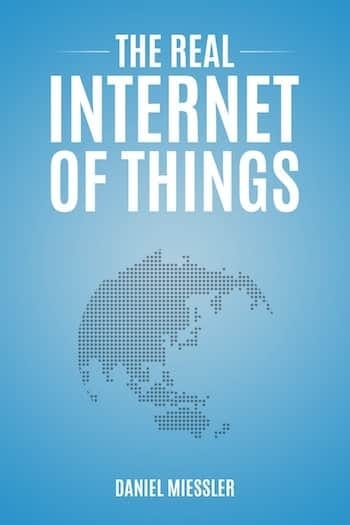AI's Morose Mania
The more excited we are as developers, the more we have to worry about knowledge workers

These are published chapters from my book The real Internet of Things, published on January 1st, 2017.
The most visible and significant role that Synthetic Intelligence will play in the near future will be serving as the interface between humans and the world.
To clarify, I don’t mean the ever-promised, conscious, and self-improving brand of SI that so much science fiction is based on. The SI I’m referring to I define as:
A computer system that can monitor human context, intentions, and commands, interpret them, and then take action as well as or better than a (human) professional personal assistant.
Whether this comes from extraordinary breakthroughs that result in true SI (however you define that), or a mere combination of clever tricks that can emulate it, matters little.
It’s been noted, by many who’ve entered the upper classes, that nothing magnifies productivity and individual effectiveness more than having a good personal assistant. Personal mobile devices combined with SI will bring this advantage to countless more people through digital assistants, and the benefits will be substantial.
To clarify, it’s not simply that digital assistants (DAs) will be intelligent, that they’ll know our preferences, and that they’ll be able to adjust the world to our liking. What’s more significant is that they will do this for us continuously.
The preferences piece is essential, because the better your DA understands you the better it can represent you when making requests on your behalf. Your DA will be essentially bound to your own personal daemon, and it will have access to the most protected information within it. Most notably, your preferences and experiences, which will both be used to help construct the ideal contextual requests on your behalf.
This will change how we interact with everything.
Get a weekly breakdown of what's happening in security and tech—and why it matters.
The current model is for you to physically manipulate technology, most of which has widely varied interfaces. So you have to find the interface, learn it, and then (hopefully) start using it in some fairly unique way. Then, when you use a different product or service, repeat the process all over again.
The new model is far more simple: voice, gestures, and text. Voice and gestures are part of our natural human communication paradigm and are thus extremely comfortable already, but text has arguably become (for a large portion of the population) a new equivalent of voice. With text you’re not learning or using a new tech interface—you’re simply "speaking" in a different way and it’s the job of the other side to sort out what you meant.
So instead of interacting with technology directly, we will interact with our DA, and our DA will work out the details with the necessary daemon. We speak, things happen. We gesture, things happen. We text, things happen. No need to find, understand, or master new tech—that’s for the service and the DA to work out amongst themselves.
What’s important is that Digital Assistants will become the preferred interface between humans and the world in a disruptive and foundational way. The idea of having technology that can do something, but that cannot be used perfectly by a DA on your behalf, will soon become extremely uncommon except for specific use-cases.
Summary
Daemons are designed to be used by machines, not humans, and the number of interactions required to make them useful will be dozens, hundreds, or thousands per second.
Humans simply cannot (and should not) interact with daemons in this way, and digital assistants using SI will be the broker between us and the technology.
Services (which nearly everything will become) will be designed (and/or retrofitted) to be consumed by Digital Assistants, not by humans.
Humans interact with DAs, and DAs interact with the world.